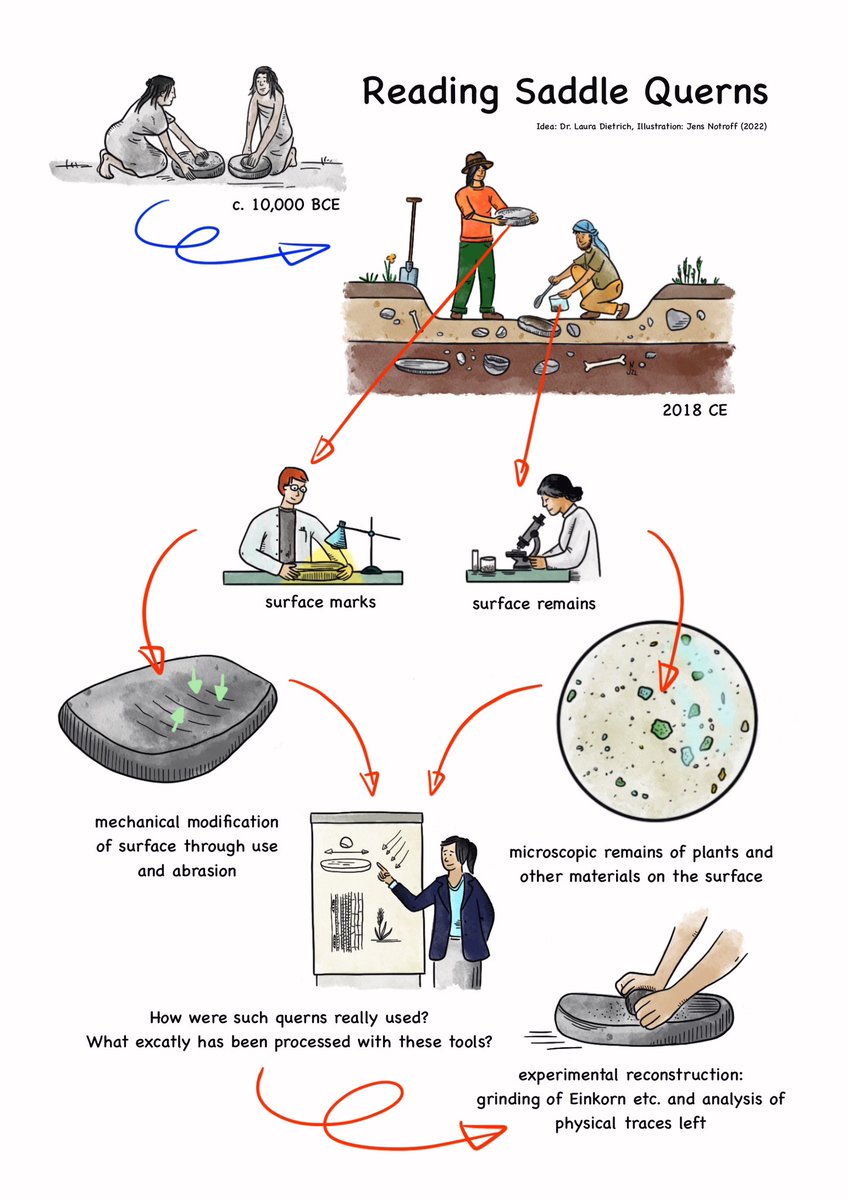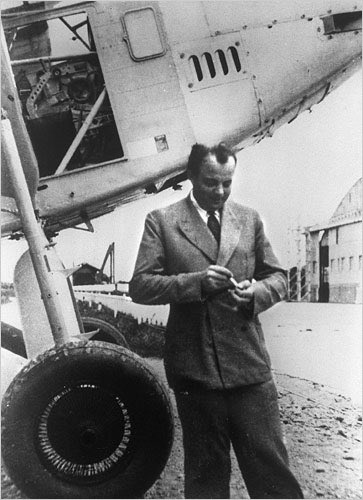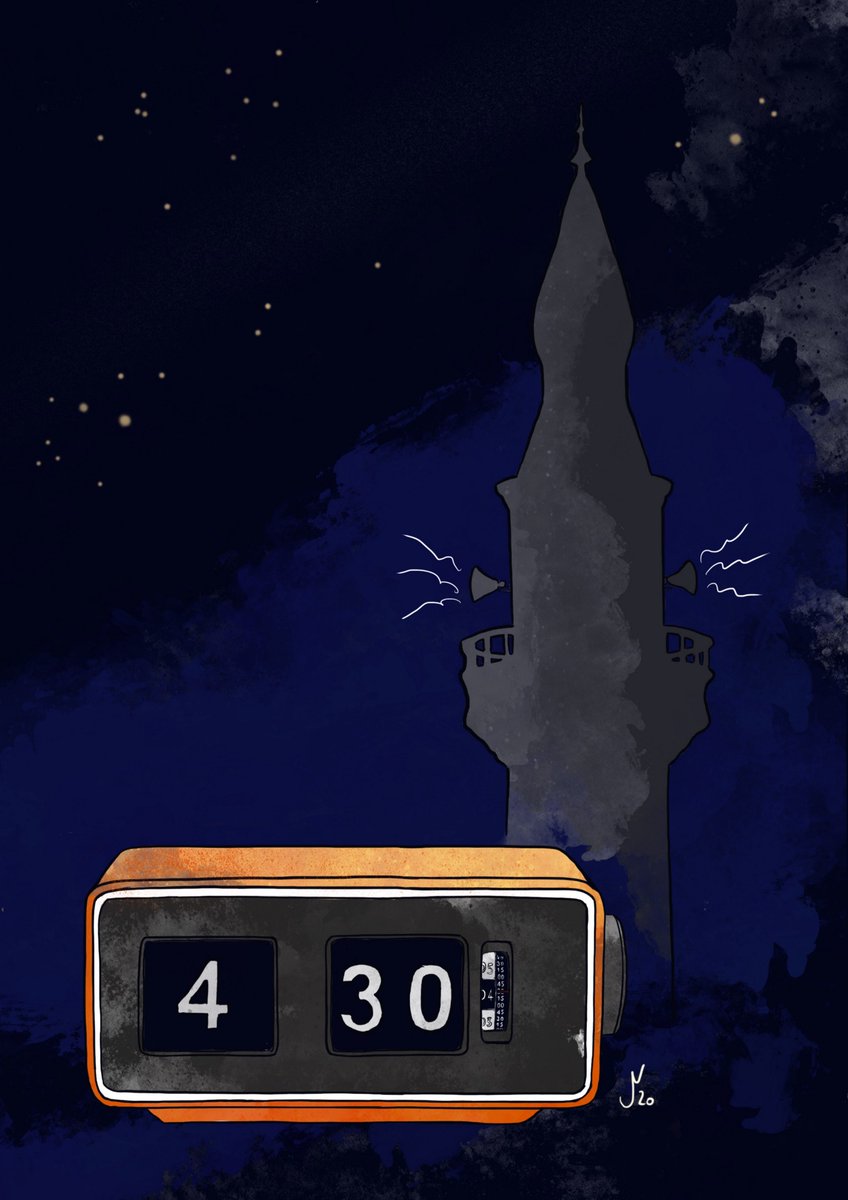
#Archaeologist, got a hat (no whip though). Once known as "Yunus" among Bedouins. Demanding a revival of the venerable profession of the #ExpeditionPainter.
How to get URL link on X (Twitter) App


https://twitter.com/brightinsight6/status/1961484658287530106

 Both figures from L. Dietrich et al., Cereal processing at Early Neolithic Göbekli Tepe, southeastern Turkey, PLoS ONE 14(5), 2019. 🔓
Both figures from L. Dietrich et al., Cereal processing at Early Neolithic Göbekli Tepe, southeastern Turkey, PLoS ONE 14(5), 2019. 🔓

 Now you're curious about what this research is about, aren't you? 😉
Now you're curious about what this research is about, aren't you? 😉
https://twitter.com/EvaRosenstock/status/1601189027365150721
 (Forgot to alt-text the image, so here we go: Photo of the so-called shaft scene in Lascaux Cave showing a bison, a man lying in front of it, and a a bird-figure on a stick underneath. There's an additional line at the man's feet and another one crossing the bison's back.)
(Forgot to alt-text the image, so here we go: Photo of the so-called shaft scene in Lascaux Cave showing a bison, a man lying in front of it, and a a bird-figure on a stick underneath. There's an additional line at the man's feet and another one crossing the bison's back.)

https://twitter.com/LiveScience/status/1600641994539278336
 Original report ("The #Sayburç reliefs: a narrative scene from the #Neolithic") by E. Özdoğan in @AntiquityJ 96(390), 2022:
Original report ("The #Sayburç reliefs: a narrative scene from the #Neolithic") by E. Özdoğan in @AntiquityJ 96(390), 2022:
 Well known and clearly associated with #PrePotteryNeolithic contexts are e.g. #StoneVessels from different places like #KörtikTepe in Turkey or #JerfElAhmar and #TellAbr in Syria as well as (often fragmented though) many more related sites (including Göbekli Tepe by the way).
Well known and clearly associated with #PrePotteryNeolithic contexts are e.g. #StoneVessels from different places like #KörtikTepe in Turkey or #JerfElAhmar and #TellAbr in Syria as well as (often fragmented though) many more related sites (including Göbekli Tepe by the way). 
https://twitter.com/hassanyildiz1/status/1545705266964054017Oliver put together a nice little thread here telling how the story of this discovery continued on after that first glimpse:
https://twitter.com/odietrich_/status/1537476497157591041

 4.30 o'clock. Ante meridiem. It's still dark outside, the dim light barely enough to distinguish a black thread from a white one: The muezzin just called the faithful to prayer and, probably unintentionally, the archaeologists to finally get up as well.
4.30 o'clock. Ante meridiem. It's still dark outside, the dim light barely enough to distinguish a black thread from a white one: The muezzin just called the faithful to prayer and, probably unintentionally, the archaeologists to finally get up as well.

 (Content warning: Images of human remains and some possibly rather explicit details of death and torture.)
(Content warning: Images of human remains and some possibly rather explicit details of death and torture.)

 A number of these figures also show a couple of details which might be interpreted as headdress - and even #clothing from the Upper #Paleolithic #Gravettian (of which we have little evidence otherwise).
A number of these figures also show a couple of details which might be interpreted as headdress - and even #clothing from the Upper #Paleolithic #Gravettian (of which we have little evidence otherwise). 



 Ein interessantes Gedankenexperiment, das u.a. auch auf die sog. #SilurianHypothesis zurückgeht, wie sie z.B. 2018 von @ClimateOfGavin und @AdamFrank4 in einem im International Journal of Astrobiology (18(2)) veröffentlichten Aufsatz diskutiert wurde:
Ein interessantes Gedankenexperiment, das u.a. auch auf die sog. #SilurianHypothesis zurückgeht, wie sie z.B. 2018 von @ClimateOfGavin und @AdamFrank4 in einem im International Journal of Astrobiology (18(2)) veröffentlichten Aufsatz diskutiert wurde:
 Is it #Khaemweset, the ancient Egyptian crown prince (1281-1225 BC) who uncovered and restored ancient monuments of past rulers and renewed their funerary cults?
Is it #Khaemweset, the ancient Egyptian crown prince (1281-1225 BC) who uncovered and restored ancient monuments of past rulers and renewed their funerary cults?https://twitter.com/jens2go/status/1484958313825591299?s=20&t=NjcV_3axrTZNAbwaEBzRuQ

 On 27 January 1945, #Auschwitz concentration camp was #liberated by the #RedArmy.
On 27 January 1945, #Auschwitz concentration camp was #liberated by the #RedArmy.
 Okay, 'real story’ may be a bit of a stretch in this case, admittedly.
Okay, 'real story’ may be a bit of a stretch in this case, admittedly.
 2/ Generally, birds seem to take up a noteworthy role in the iconography at #GöbekliTepe (and other related #Neolithic sites).
2/ Generally, birds seem to take up a noteworthy role in the iconography at #GöbekliTepe (and other related #Neolithic sites).

 Only in September 1998, a fisherman, Jean-Claude Bianco, found a silver identity bracelet ('gourmette') with the name of Saint-Exupéry east of Riou Island, south of Marseille - far from his originally intended flight path.
Only in September 1998, a fisherman, Jean-Claude Bianco, found a silver identity bracelet ('gourmette') with the name of Saint-Exupéry east of Riou Island, south of Marseille - far from his originally intended flight path. 

 "4.30 o'clock. Ante meridiem. It's still dark outside, the dim light barely enough to distinguish a black thread from a white one: The muezzin just called the faithful to prayer and, probably unintentionally, the archaeologists to finally get up as well."
"4.30 o'clock. Ante meridiem. It's still dark outside, the dim light barely enough to distinguish a black thread from a white one: The muezzin just called the faithful to prayer and, probably unintentionally, the archaeologists to finally get up as well." 

https://twitter.com/kimbiddulph/status/1344250268431560705
 #Archaeology31 day 2, #future, offers a great chance to highlight a topic I found particularly interesting as of late:
#Archaeology31 day 2, #future, offers a great chance to highlight a topic I found particularly interesting as of late: 

 Article 1:
Article 1:

https://twitter.com/jens2go/status/1251241875148812289
 Before we start with the tour, let's just have a look at this sculpture right over here: It's so-called #UrfaMan (from Yeni Mahalle / Yeni Yol) - one of the oldest examples of a life-sized human statue, dating back to the Pre-Pottery #Neolithic as well.
Before we start with the tour, let's just have a look at this sculpture right over here: It's so-called #UrfaMan (from Yeni Mahalle / Yeni Yol) - one of the oldest examples of a life-sized human statue, dating back to the Pre-Pottery #Neolithic as well.